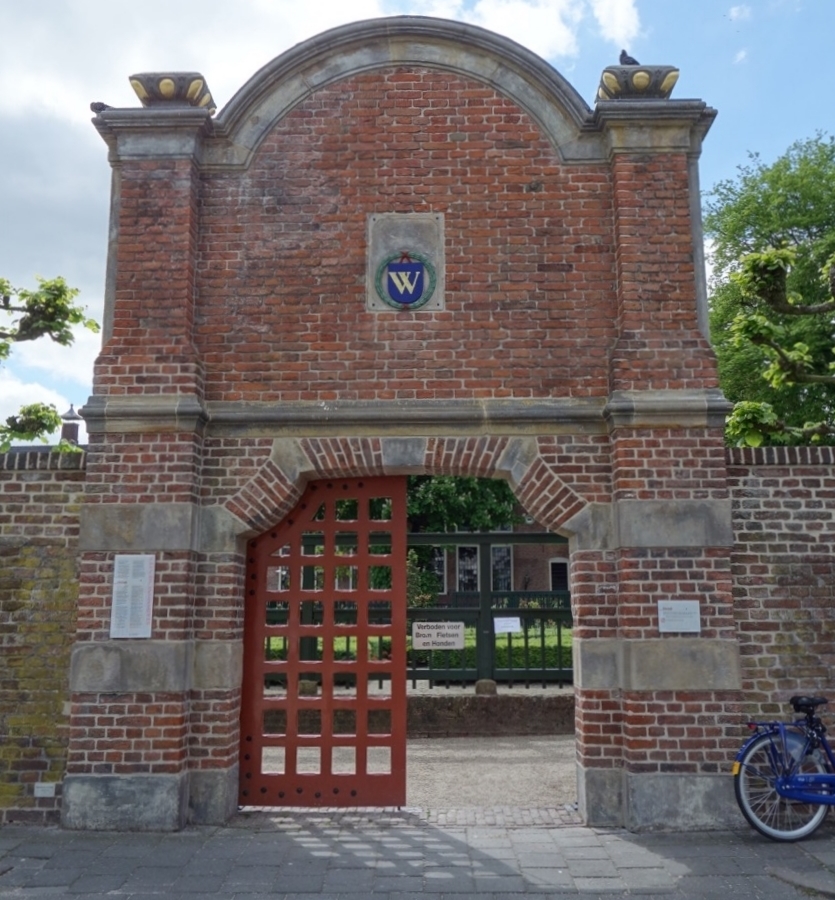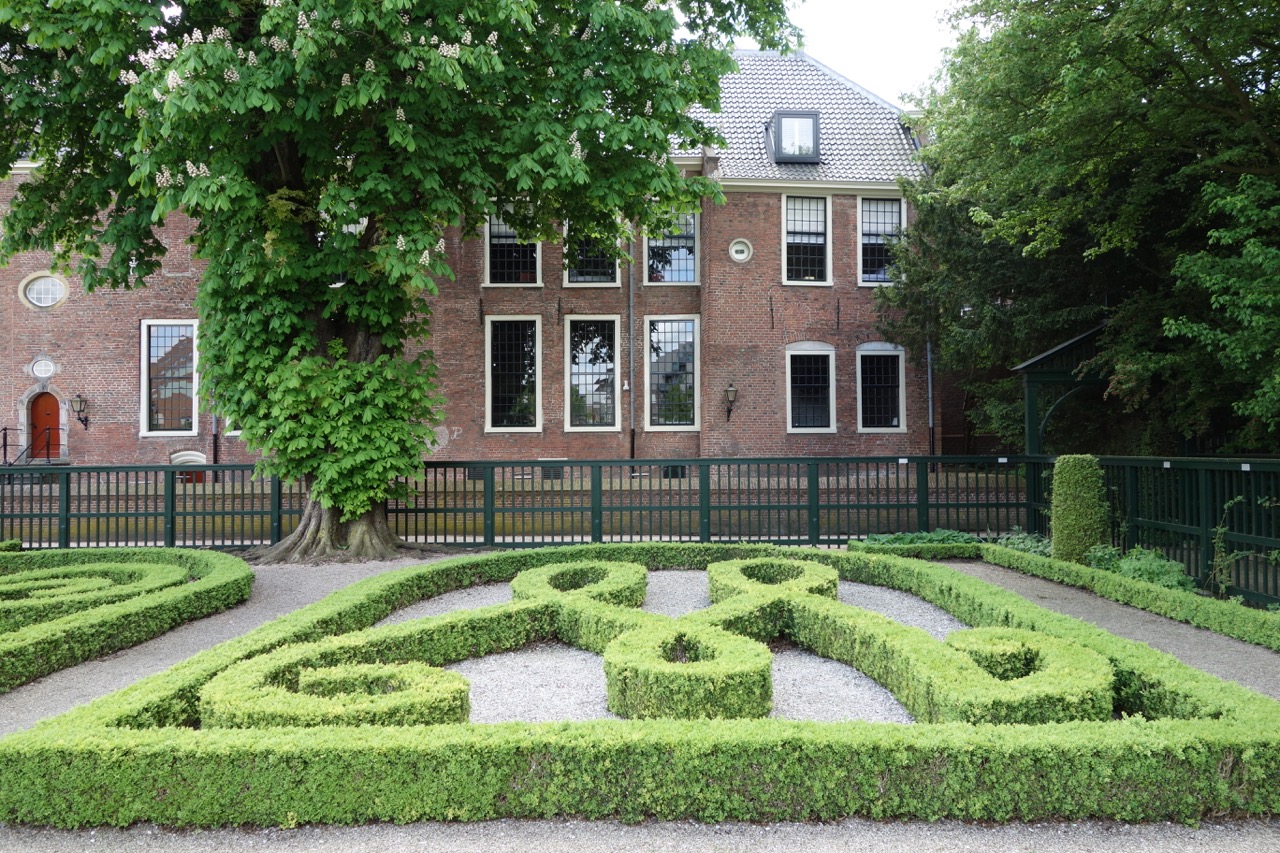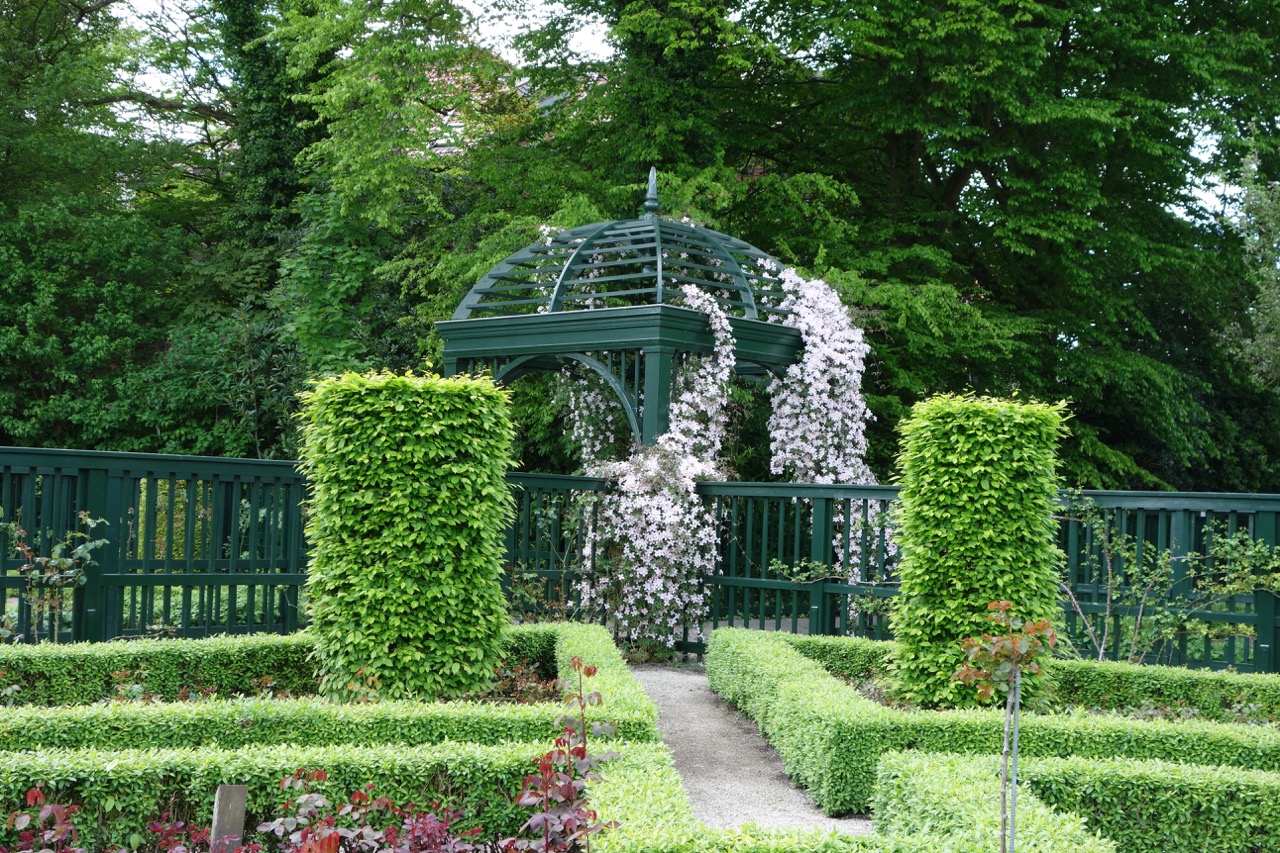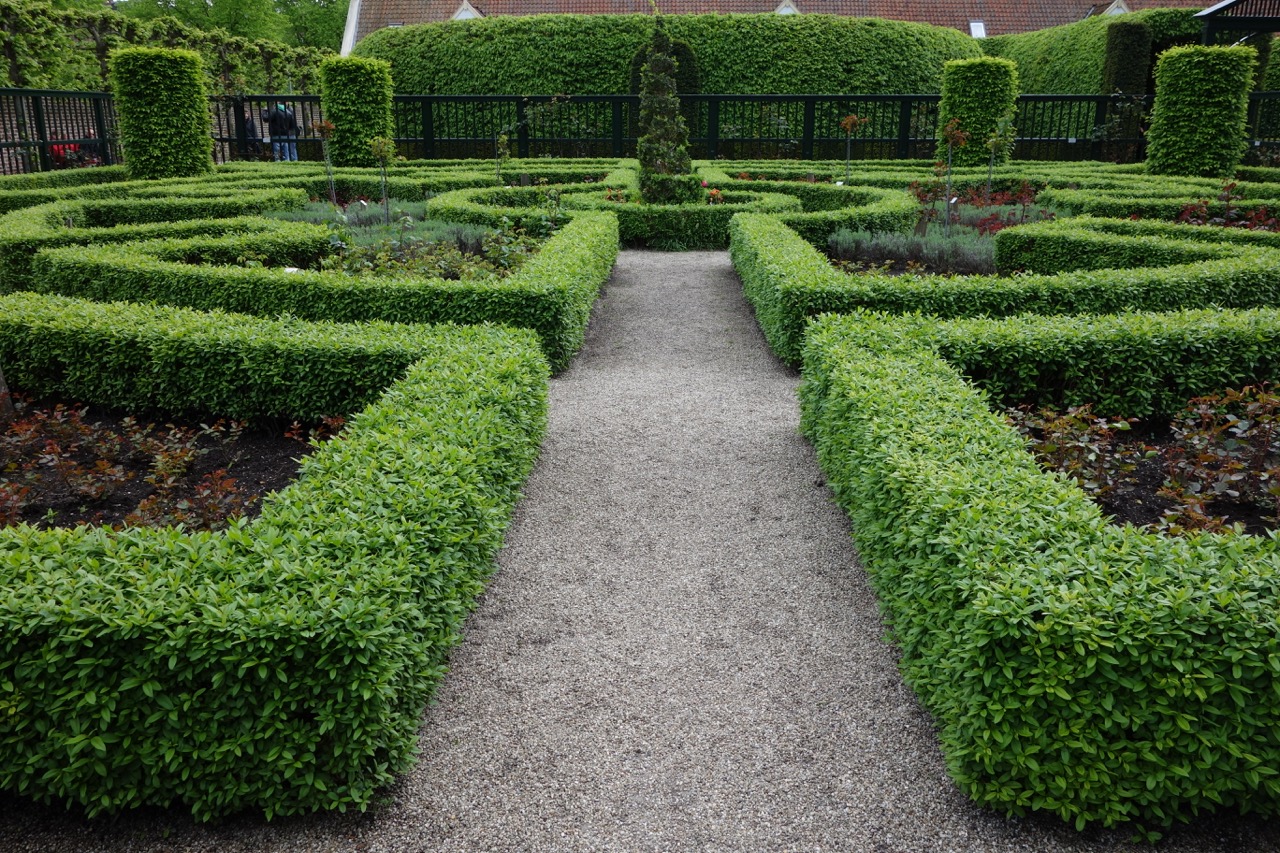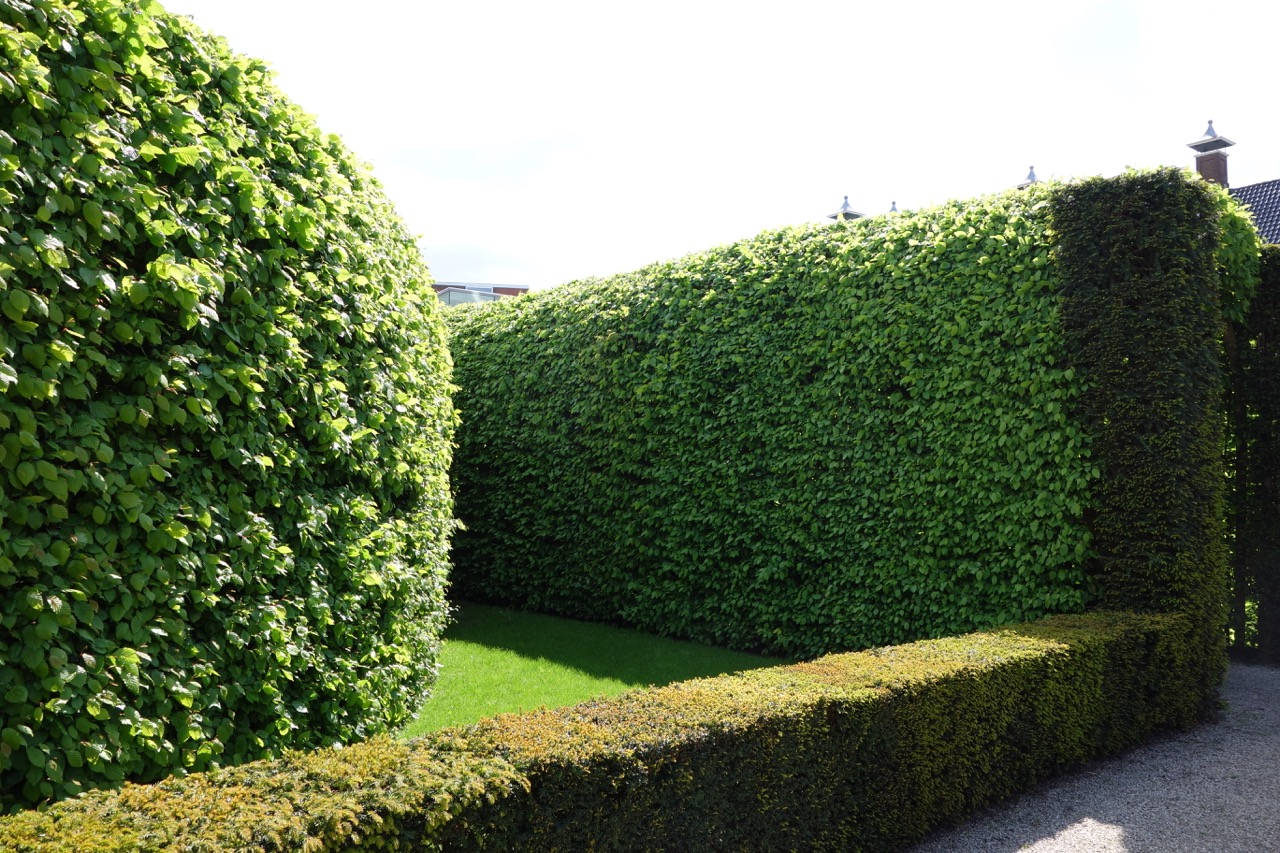I love the separation that middle age cloister gardens create -- between inside and outside worlds. Prinsenhof in Groningen, the Netherlands, is a wonderful example of this.
Its role as a cloister dates back to the 1400’s. Tall brick walls separate it visually from a busy city street. Pleached sycamores peak out above the brick wall – the only sign of something special within. In a traditional cloister garden, the intent was to provide space to grow practical plants – medicinal herbs, vegetables, and flowers for the altar. And the garden at Prinsenhof would have been laid out to do so.
But in the 1500’s Prinsenhof became a residence and the gardens were updated to with formal elements to entertain, delight, and impress. The garden today still reflects 16th century tastes. Diagonal paths lead to an arbor smothered in clematis. Yew columns anchor a formal garden. Hornbeams trained along a massive pergola create a large hedge. A woodland path runs along one side. Near the house, a boxwood parterre bears the initials W & A. These are for Willem and Albertine, the garden’s creators.
Groningen is the largest city in the north of the Netherlands and dates to around 1000. Prinsenhof sits in the older part of town.
Prisenhof combines the mystery and enclosure of an cloister, with the mastery of a formal garden. It is a delight to discover.
Today the property is used as a hotel and restaurant developed by Frank Verbeek and Jacques Muller. They explain its history, ”During the middle ages, Prinsenhof was the property of the Brethren of Communal Life, a religious faction. It dates from the 15th century, [and by] the end of the 16th century Prinsenhof became the official residence of the Nassau viceroys, giving the building its current name. In this period the Prinsenhof gardens were created. The letters W and A, cut from taxus hedges, refer to viceroy Willem Frederick and his spouse Albertine Agnes.”
Groningen is a beautiful 2 hour drive north from Amsterdam, close to the German border. It is a vibrant town, home to the University of Groningen which was founded in 1614, the second oldest in the Netherlands. Add Groningen to your next Dutch road trip.
Willem Frederick, pictured here, and his wife Albertine Agnes created the garden design we see today.


